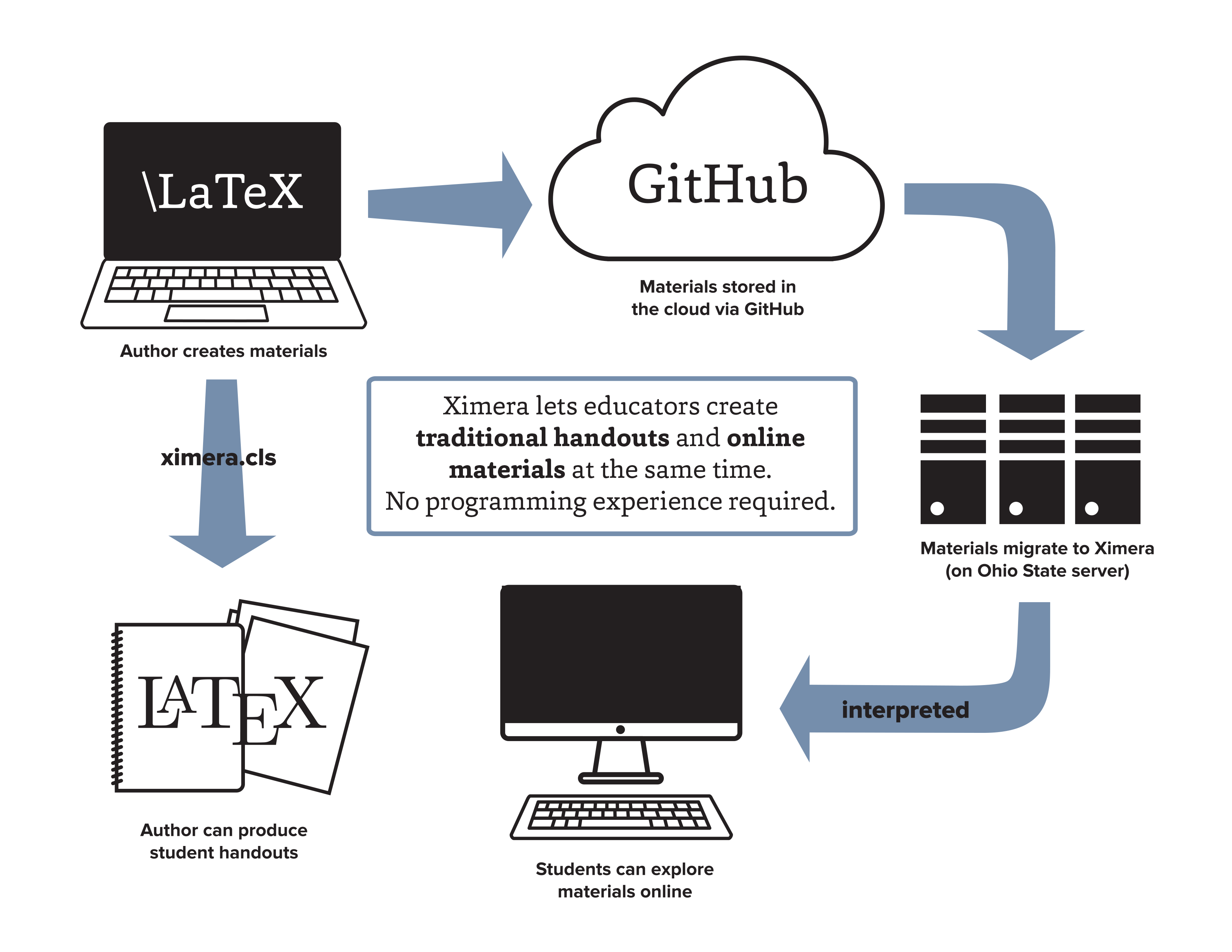We describe the basic principals which guide our authoring process.
- traditional ‘‘print’’ classroom materials and
- online interactive classroom materials.
To be successful, we believe that it is necessary for documents to be authored in a way that separates content from deployment, where individual sections are modular, and care is taken to ensure that an author’s work is usable by others.
Separating content from deployment
The content of a document consists of the actual data contained within the document. The deployment of the content refers to how the content is viewed by the intended audience. With Ximera, the content is written in a plain text document. Once the content is written, it is deployed as a PDF and an online interactive textbook.

Modular
In Ximera, the basic ‘‘unit of content’’ is an activity. Most often, authors will think of an activity as:
- A section of a book.
- A worksheet or handout.
- A single problem.
Each activity should be more-or-less ‘‘self-contained.’’ This not only means that in some sense the content should be self-contained, but also that every activity should be in a directory. The directory containing the activity should contain all necessary documents for producing the activity. This will help others use your activities in their work.
Usable for others
Care must be taken that others can understand how to find and use the code for your activities. It is best to use naming conventions that are ‘‘obvious.’’